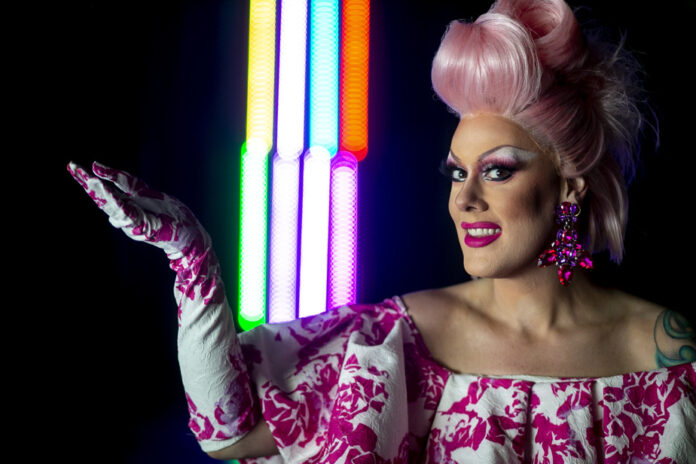“No, not all drag is. Do not assume a person’s sexual orientation. Anyone can do drag, regardless of their gender identity or sexual orientation. It’s more common to be part of sexual and gender diversity and to practice this profession, but there are heterosexuals, pansexuals, bisexuals, asexuals who practice the profession and we can’t know it! I never thought about going into drag, in fact, I had friends who were into drag, and I had no attraction towards it. I had to take part in the game at the age of 19 to realize that it was really something that brought together a lot of artistic disciplines that I appreciated (playing a character, dancing, singing, theater, the comedy). It seems like I had to experience it to realize that, ultimately, this job is fantastic! »
” No. And it’s always complex to answer that because what can be, let’s say boring or a little tiring, is the preparation time. It’s certain that if I compare with other artists on set, the preparation is not at all the same. I don’t show up 30 minutes before check-in to sit in a chair and get my makeup done, and that’s it, that’s it. It takes me 90 minutes just for makeup. And before that, there is the search for costumes, sometimes you have to have accessories and wigs made. And as I make more and more, I want to make sure I’m not carrying over something I’ve already worn, so it gets a little complex! […] Of course, if I could snap my fingers and it was done, that would be ideal. Especially if it’s early in the morning, when we’re called to a set at 9 a.m., that means I have to prepare three hours before. […] But transformation is also the engine that makes me capable of delivering a performance. This is what gives me the missing confidence to take on the exercise. »
“It’s very difficult to calculate because sometimes, for television productions, we have budgets for that, negotiated in advance. But most of the time, we don’t have any. […] A very general approximation, I think it’s 25%, I don’t know if my accountant would agree, but I think it’s 25%! »
“It depends on what you mean by ‘a little more feminine.’ I change my silhouette every time I’m in drag, basically, I wear padding on the chest and hips, to give myself a silhouette that is considered more feminine, without necessarily falling into a big caricature . It bothers me a little to answer this question, because what is femininity, anyway? All bodies are different! »
No, I don’t spend more time in drag, on the other hand I have rushes, busier periods, or there, yes. For example, when we were filming Crave, it was 12-hour work days, I got up, I had a coffee, then I started. In the evening, I was very tired, so I took off my makeup, ate and went to bed. In those rush moments, yes, I was more often in drag. But otherwise, normally, there is a fairly good balance, a good balance. It takes periods of calm where I give my face and body a break, where I recharge, it’s important to give yourself time to rest. When I’m in drag, it’s for work, so we plan the days accordingly. I’m also an entrepreneur, so there’s a big side where I’m not in drag, I’m in planning, organizing events, managing other artists. So there is really a balance between office life and life on stage. »















